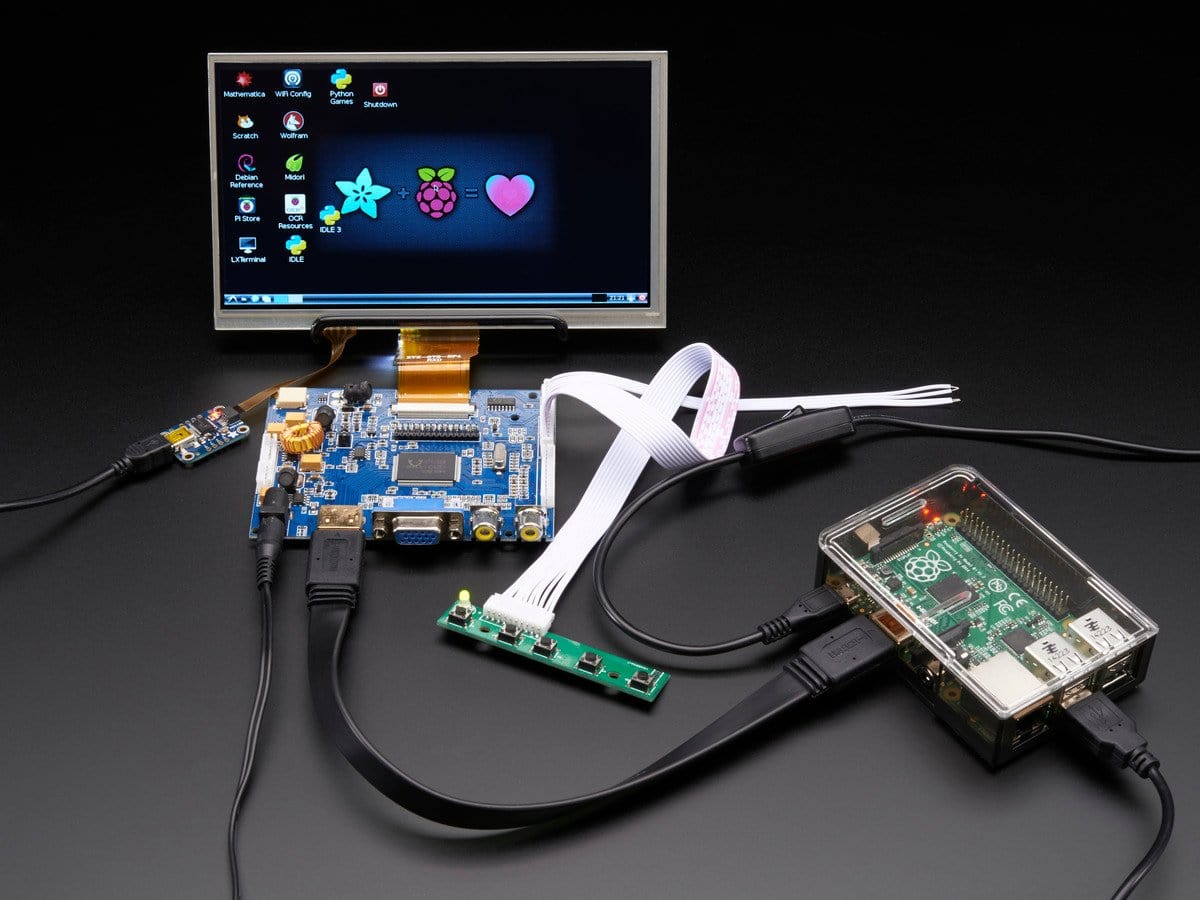
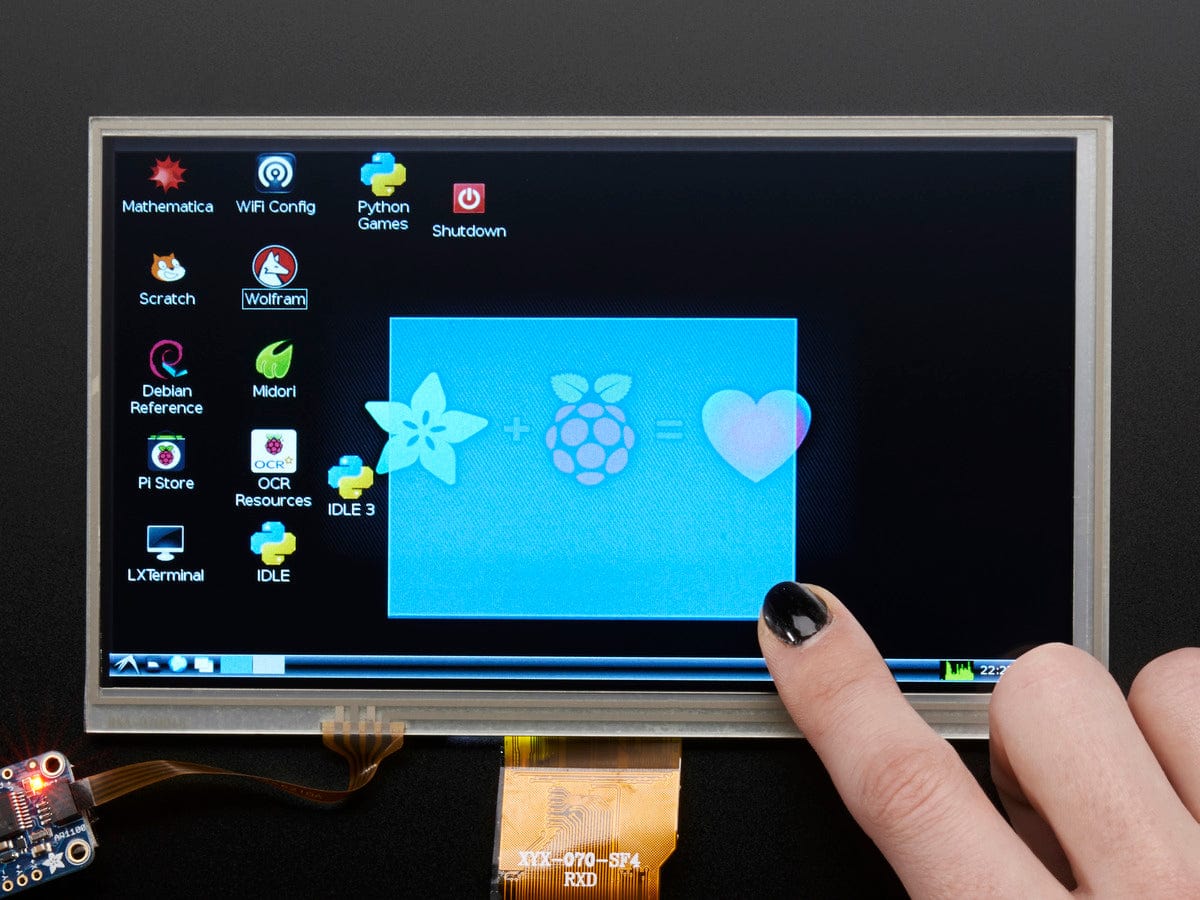
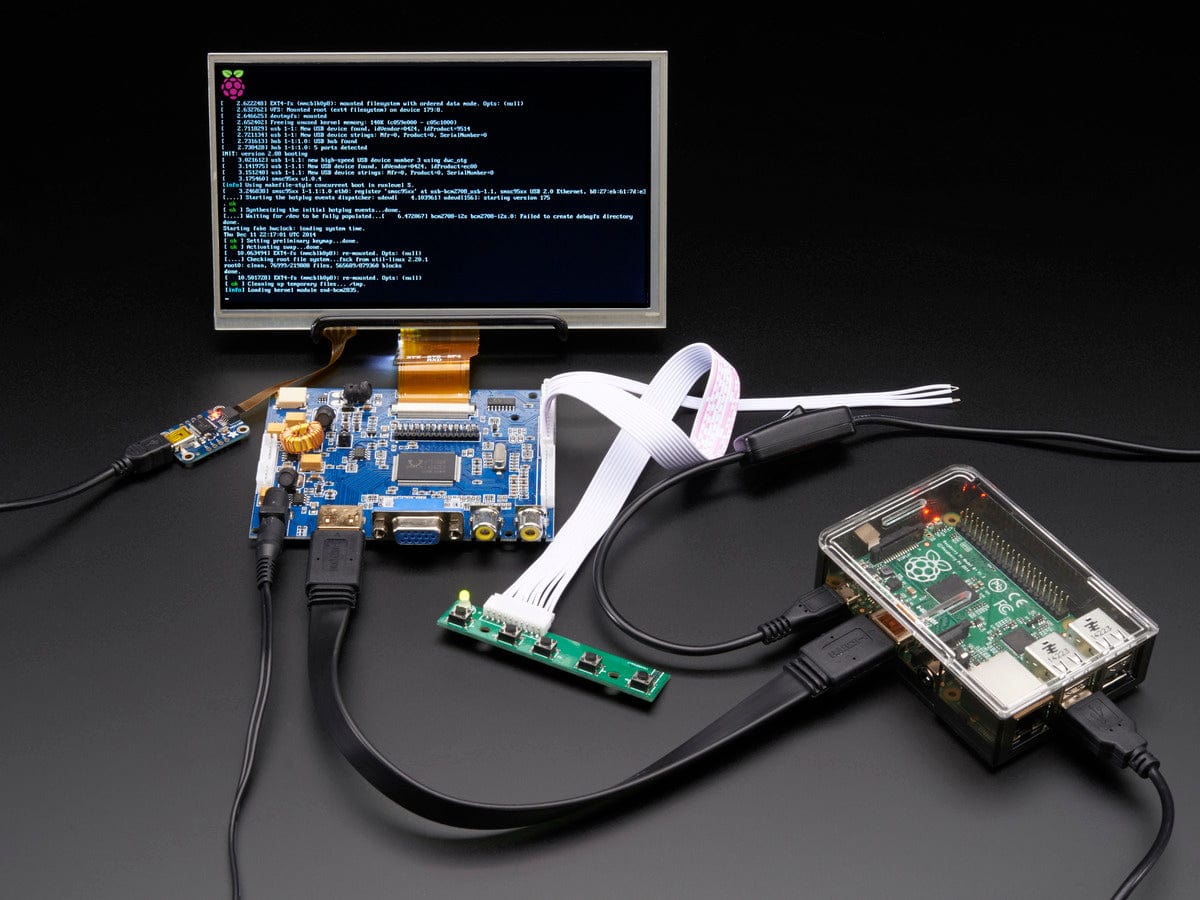
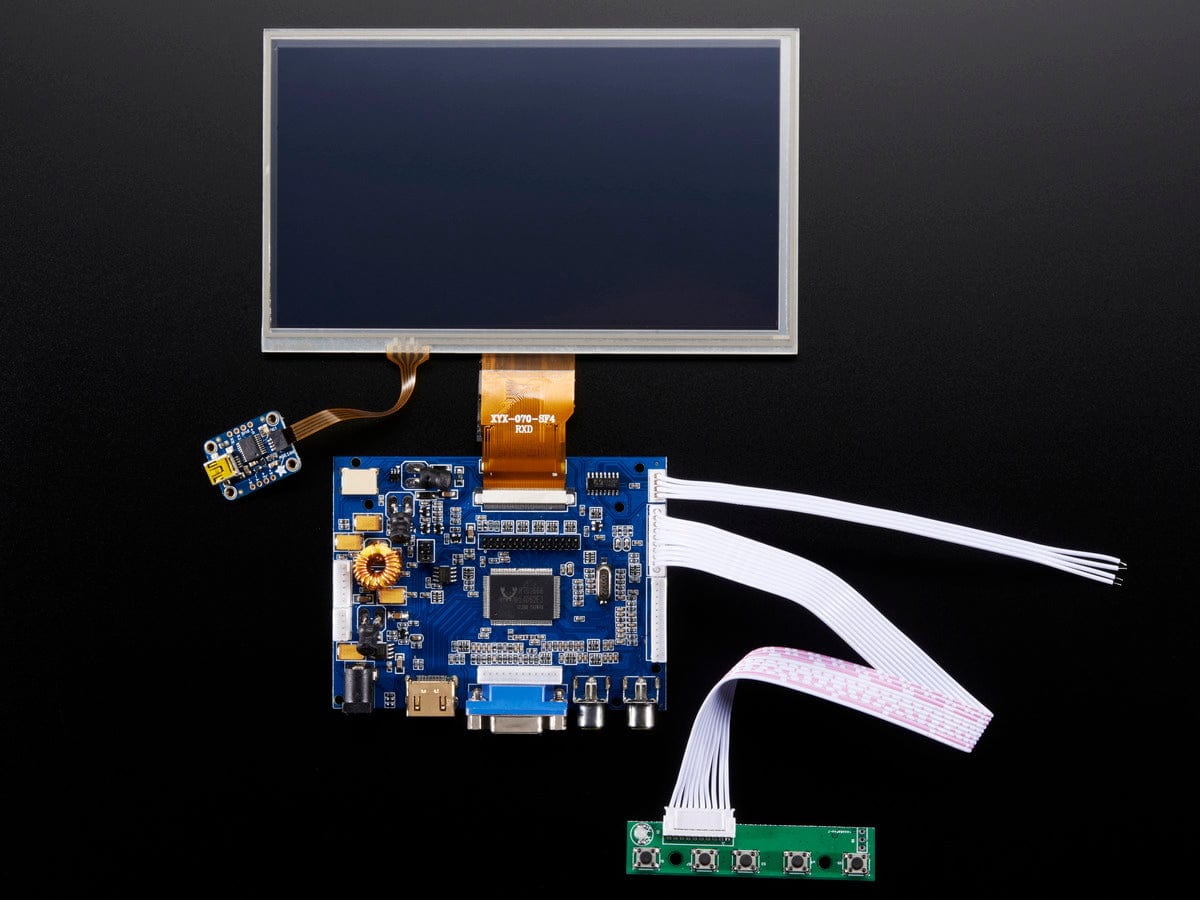
Login / Signup
Cart
Your cart is empty
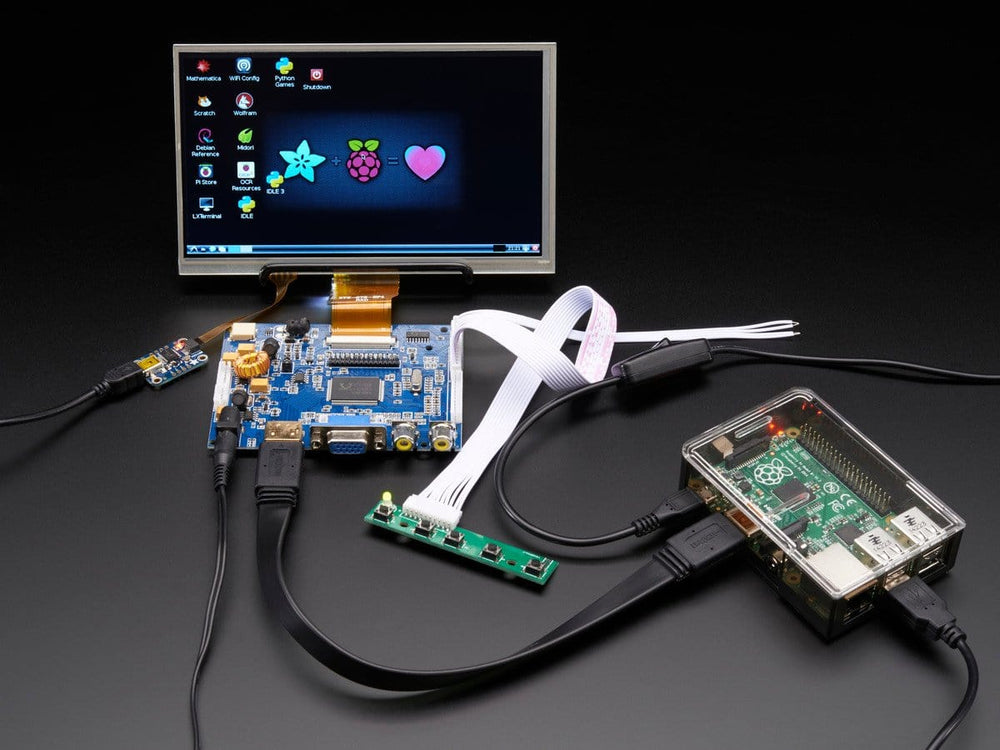
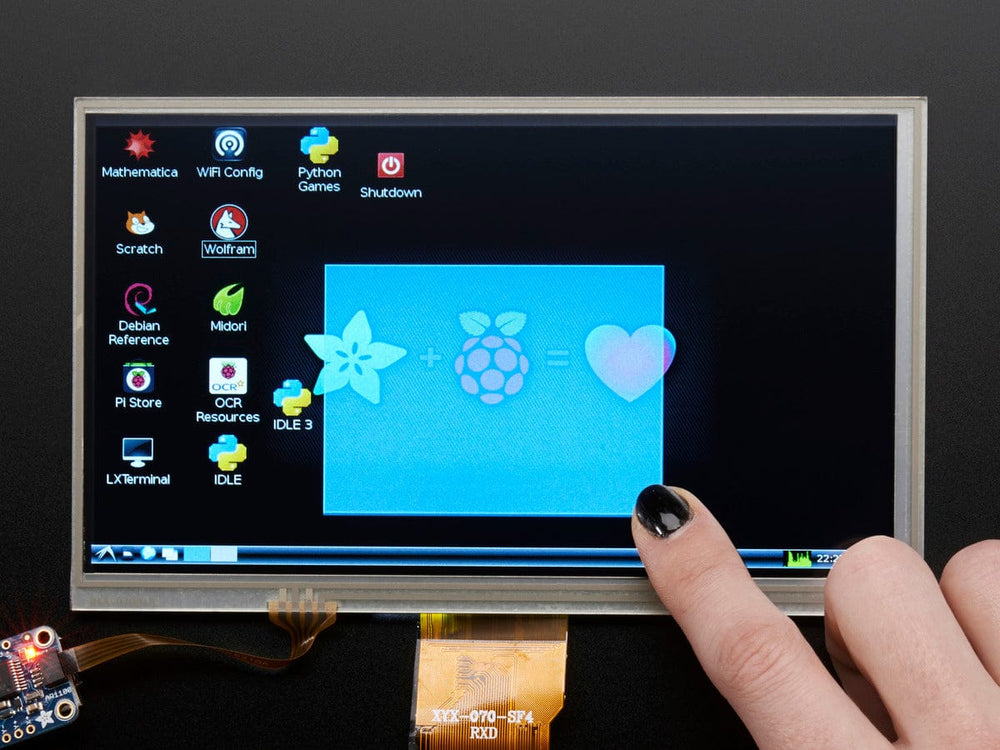

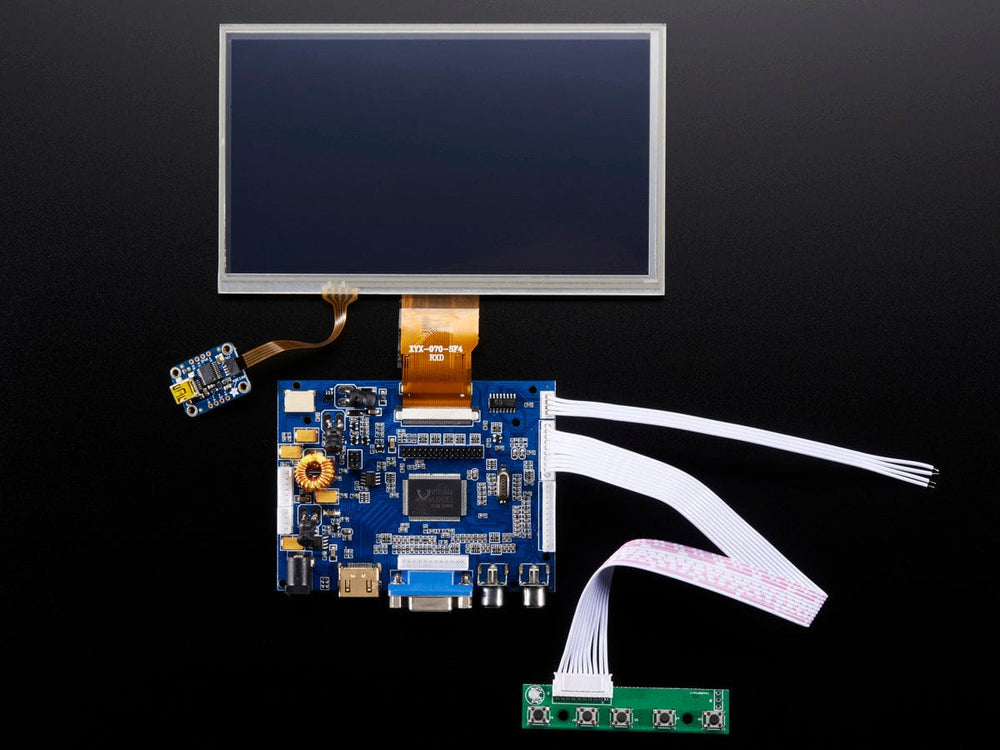
"Give me the works!" That's what we said when we put together this 7" screen at 1024x600 resolution, with a resistive touchscreen overlay AND with HDMI stereo speaker support! For this model, we tried to get an inexpensive 1024x600 touchscreen display that was still high quality and would be good for embedded computing usage. The visible display measures 7" diagonal and is a 'raw TTL' display. We include a driver board with HDMI, VGA and Composite inputs and HDMI stereo speaker support.
We also include a plug-in cable that connects to the 4 speaker output pins, the pins are labeled LOUT+/- and ROUT+/- you'll have to solder your own speakers to the 4 wires.
There's also one of our Resistive Touch Screen to USB Mouse Controllers - AR1100 so you can connect one from your computer (or Pi). The Resistive Touch Screen to USB Mouse Controller is a board that can handle analog to digital conversion.Most converters we've found are not very easy to use, and are 'fixed' - making them difficult to calibrate. The AR1100 is a nice chip that solves this problem by acting as a touch->USB converter and also comes with calibration software. The calibration software is Windows only, but once you've calibrated you can use the screen on any OS. The touch screen shows up as a USB mouse so no special drivers needed. We've tested it sucessfully on Mac, Windows, and Debian Linux (Raspbian on a Raspberry Pi). Other Linux distributions may or may not work, but if you're running Linux you're probably used to that. We also noted it does not work with a Raspberry Pi + Windows 10 IOT yet.
This version comes in 1024x600 instead of the more expensive 1280x800 display. It's also not IPS so it's not good for wide-angle visibility. Because of the way the screen is made, the resistive touchscreen we have added on top does not work on the top 2mm of the TFT.
There's a little wired PCB with little buttons that let you enter a menu system for adjusting brightness, color and contrast. It tries to auto-detect which input you have and switches to that one or you can 'select' from the menu which to display.
To demonstrate it, we took some photos with the display connected to a Raspberry Pi, but it will also work connected to any device with HDMI, VGA or NTSC/PAL output. It will not work with a device that only outputs DVI (without a DVI to HDMI converter) or SECAM.
For use with a Raspberry Pi we suggest editing config.txt to set the HDMI to the native 1024x600 in case it doesn't detect the resolution properly. You can see our suggested config.txt in the HDMI Uberguide. The easiest way to edit the config.txt is to put the Pi SD card into an every day computer and edit config.txt with any text editor and save.
For use with a BeagleBone Black running Ubuntu/Debian, we found it works when plugged in, no configuration required.
A power adapter, cables, wire stand, and Raspberry Pi are NOT included. You will need to either purchase a 5-12VDC adapter or you can use one you've already got around the house. We show the display on a bent wire stand which is not included, but you can pick one up here.






